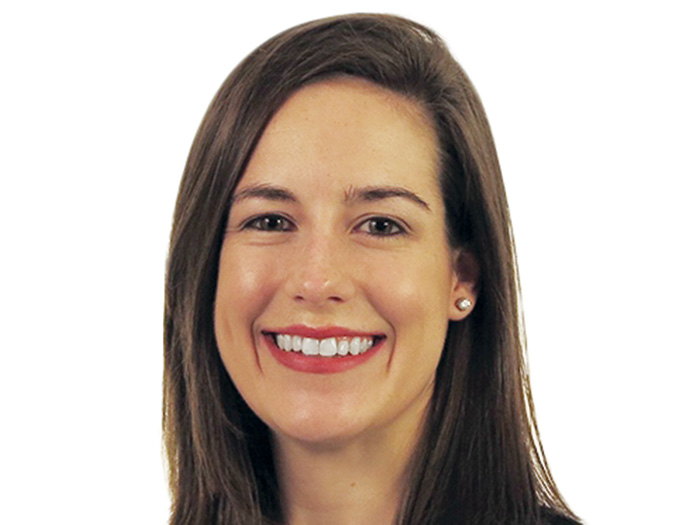Coverage Spotlight: Reputation Guard
Reputations are Fragile. A New Solution Helps Companies Protect and Restore Them.

In the age of viral videos and around-the-clock reporting, news travels fast. For organizations whose business hinges on a positive brand image, any negative story can skewer that image in a matter of hours, whether it’s true or false. There is, after all, no jury in the court of public opinion.
Protecting a business from reputational damage takes a two-pronged approach: first, an organization must have a plan in place to launch a response to any negative event as quickly as possible. Second, it needs a way to measure and recoup income losses caused by a drop in consumers’ trust or approval. Many institutions struggle with both tactics.
Jeanmarie Giordano, Head of Professional Liability, AIG, and Kathryn Bannister, Professional Liability Product Manager, AIG, discuss how the risk has evolved, what makes it difficult to mitigate, and how a new solution helps insureds execute both prongs of their mitigation strategy.
R&I:: What’s driving reputation risk today?

Jeanmarie Giordano, Head of Professional Liability, AIG
Jeanmarie Giordano: Damage to reputation has been a concern of boards for years, and those concerns have not abated given the speed with which information can travel. With social media and a 24-hour news cycle, an incident can go viral incredibly quickly.
Corporate scandals and executive wrongdoing have always garnered negative press, but we live in an age where there are certain news outlets that are quick to publish stories whether they contain misinformation or not.
Traditional news outlets are still concerned with the need for accuracy, and stories still go through a lengthy vetting procedure when being published in traditional media. But there is no such vetting on social media. And unlike traditional media, the average Twitter or Facebook user is not obligated to issue a retraction if a story is proven false. Once it’s out there, the damage is already done.
That means companies have to respond incredibly quickly and get their side of the story out on the same channels. Knowing what to say and having that response coordinated and planned is the stumbling block for most companies.
R&I: Which types of companies are most at risk?
JG: Most of the headlines have centered around well-known, prominent people and organizations in a variety of sectors, but no one is immune. Middle-market firms as well as non-profits and educational institutions can be especially devastated by a reputation event because they may not have the resources to invest in working with a crisis management firm proactively.
Campus protests in recent years have reinvigorated this discussion. The student population in higher education is very social media-savvy. If they see something happening on campus, the first thing they’ll do is whip out their phones and capture it and share it.
At one university, campus protests were so impactful that the school experienced decreased enrollment the following year and had to lay off professors and close dorms. This shows how significantly a reputation event can impact revenue and lead to loss of income.
R&I: How can companies calculate the financial impact of a reputation event?

Kathryn Bannister, Professional Liability Product Manager, AIG
Kathryn Bannister: Quantifying reputation risk continues to be a challenge, which makes it hard for companies to prepare financially. Some carriers specify particular reputation events that trigger a policy, or they set complex thresholds for what is considered income loss. But reputation events are highly unpredictable, and such predefined conditions don’t allow for a lot of flexibility in the coverage.
AIG recently expanded its ReputationGuard® coverage to include income loss protection, under which we engage forensic accountants to calculate the income loss after the period of indemnity ends. This allows for a more accurate assessment of how an event actually impacted business. It depends on a variety of factors — industry, specific revenue streams, and external market factors.
A mishandled response to a crisis can generate more reputational damage and result in greater financial consequences than the incident itself, so it’s important to get out in front of reputation risk and mitigate the exposure proactively as much as possible.
R&I: What proactive steps can companies take to reduce their exposure?
KB: Establishing a clear response plan is critical. Companies are increasingly taking advantage of their carriers’ partnerships in order to manage risk in areas like property, cyber and employment practices; we think managing reputation risk should be no different and AIG provides access to communications, public relations and crisis management firms to create a plan before an event occurs. A quick response is only possible when the groundwork has already been laid out.
JG: When a reporter knocks on your CEO’s door, will he know what to say or what not to say? Will you respond with a statement on social media or with a press release? What’s the timeframe for that response? Or should you do nothing at all? A communications expert can keep pulse of what’s being said and determine how best to respond, but companies have to know who to contact, when to reach out, and who will take charge of the response.
R&I: How effective are the reputation coverages currently available on the market?
JG: Insurance policies are reactive by nature. An event happens, the insured files a claim, the claim is adjusted, and then there’s a payout. That model doesn’t necessarily work for a fast-moving risk like reputation damage where time is of the essence. Without a market standard for assessing lost income, payout may vary depending on the carrier and may not be commensurate with the damage inflicted anyway.
R&I: What makes AIG’s ReputationGuard different?
JG: One of the most unique features of this product is that it’s triggered by the insured contacting one of the crisis management firms we partner with. They don’t have to come to us first, thereby eliminating down time between an incident surfacing and the insured getting the expert assistance they need to respond as quickly as possible to protect their reputation.
The coverage also emphasizes proactive preparation. It provides two free hours of assessment and consultation with one of our panel communications firms. Not only does that help the insured outline a preparedness plan, it also starts to build that relationship so if the company needs to reach out to the firm during a reputation event, it’s not the very first contact.
KB: We recently extended coverage to include income loss protection. Quantifying reputation risk is the challenge, and we’re recognizing that and providing for the fact that forensic accountants need to be involved both in the crafting of policy wording, and to examine what transpired after an event. We consulted with two external forensic accounting firms in developing the contract language and incorporated their considerations into the wording.
Because this risk is so hard to plan for, the coverage is meant to be broad, so it can respond to whatever crisis a company is facing. &










